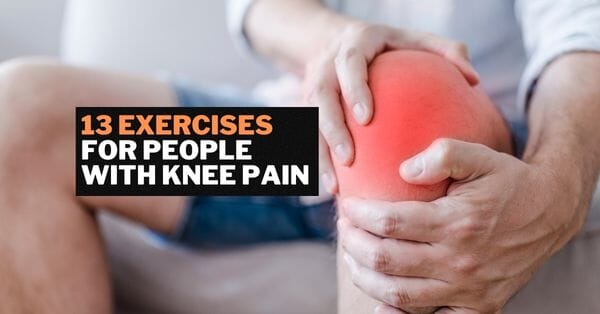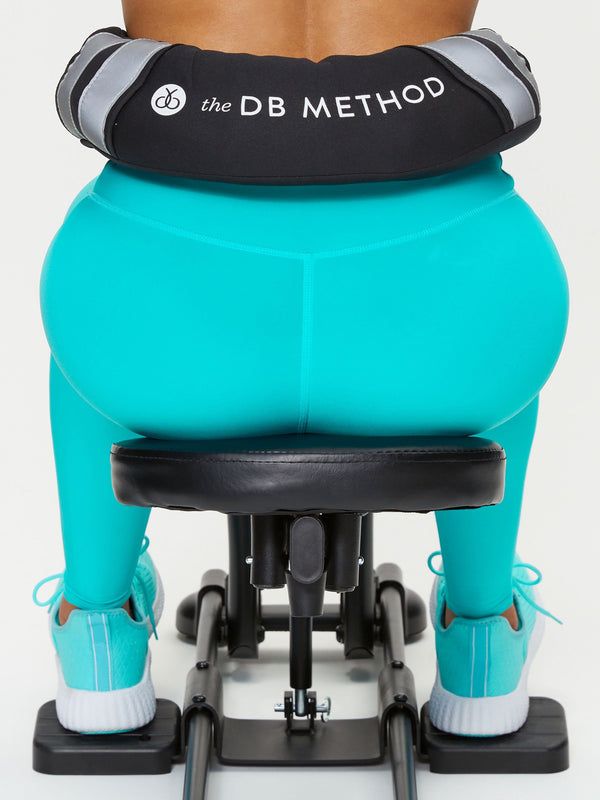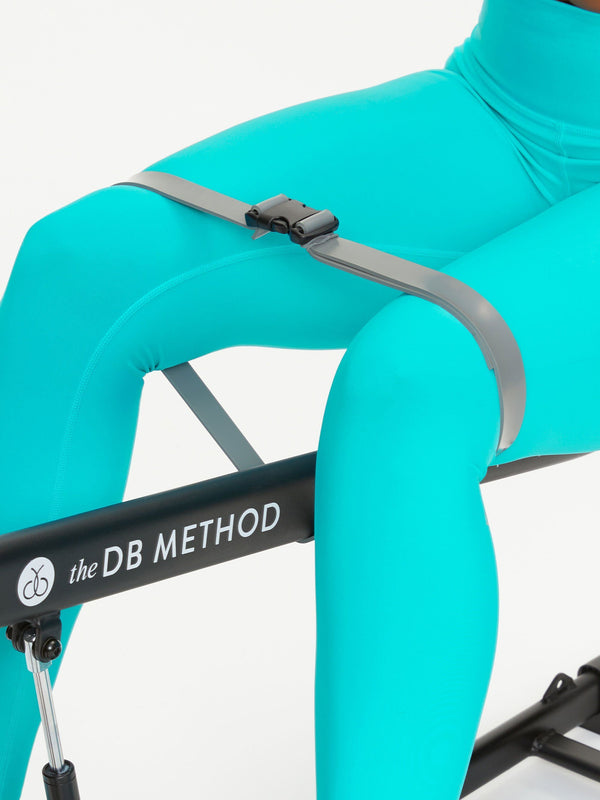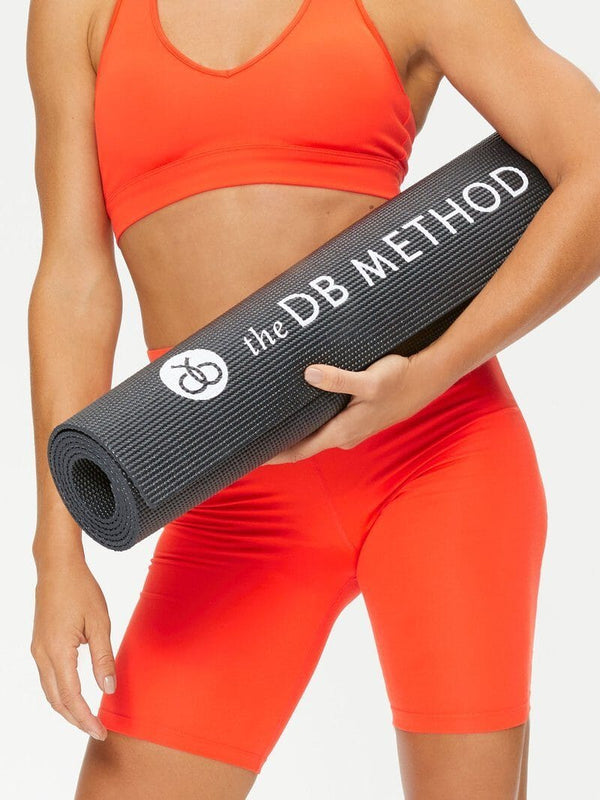If your knee hurts, you aren’t alone. Each year, over 18 million people see a doctor for knee pain. This can be caused by pressure from sitting in your chair while you work (the stiffness), exercising without holding proper form, and if the muscles that control your hip and knee become weak from a lack of training (source).
One of the first steps, outside of contacting your doctor, is to build your knee strength by working the muscles connected to this joint. In fact, building these muscles can help prevent certain types of knee injuries and soreness. But before you start exercising, contact your doctor to make sure you are able to exercise without making your knee pain worse.
This is especially important if you have a fever (as this could be a sign of other conditions), your pain has not improved, or it is intensifying.
Exercising this joint can reduce three of the most common causes of knee discomfort. These causes are:
- Patellofemoral pain (pain caused by irritation of the cartilage underneath your kneecap)
- Chronic degenerative meniscal tears (the cartilage that cushions your knee joints deteriorates or tears)
- Osteoarthritis (chronic joint inflammation)
If your doctor has cleared you, and you’re looking for “knee-friendly exercises”, here are 13 that you can mix and match into your routine.
- Calf Raises
- Straight Leg Raises
- Prone Leg Raises
- Heels Elevated Squats
- Half Squats
- Wall Squats
- Squat Machines
- Quadruped Hydrant
- Clamshells
- Hamstring Curls
- Lateral Band Walks
- Glute Bridges
- Step-ups
Calf Raises
Strong calf muscles support your knee joint by absorbing some of the forces that are typically directly on your knee. Having strong calves can help take some of the strain off everyday activities like stretching to reach a high shelf, climbing stairs, and even walking.
- Stand with your feet hip width apart.
- Slowly raise your heels off the floor as high as you can while keeping the balls of your feet on the floor.
- Pause at the top of the movement.
- Slowly lower your heels back down to the starting position.
Straight Leg Raises
Strong quads lessen the strain and stress on your knee joint by distributing the forces evenly, and your hamstrings then absorb the shock of impact to improve the overall mobility of your knee. Strong hamstrings and quads support your knee joint while kicking something like a pet toy out of the way, or picking that same toy up off the floor later on.
- Lie on your back with your legs extended straight in front of you.
- Keep your legs straight, and slowly raise one leg off the ground as high as possible.
- Hold for a few seconds, then slowly lower your leg to the starting position.
- Repeat with the other leg.
Prone Leg Raises
The prone position is all about lifting your leg and engaging your hamstrings and glutes. All of these muscles support your knee joint which is important for standing up, sitting back down, and going for a jog.
- Lie face down with your legs extended straight out behind you.
- Keeping your leg straight, slowly raise one leg as high as possible.
- Hold for 1-3 seconds, then slowly lower your leg back down to the starting position.
- Repeat with the other leg.
Heel Elevated Squats
By elevating your heels, you shift your weight onto your toes and target your quads which is good for knee pain as a lack of quad strength can lead to certain types of knee pains and imbalances. As an added bonus, heel elevated squats can be good for ankle mobility without compromising form. This protects your knees when you are doing daily movements like getting up from a chair.
- Stand with your feet hip width apart and your toes pointing forward. Place a block or weight plate under the heels of both feet.
- Lower your body as if you were going to sit back in a chair. Keep your weight in your heels and your knees over your ankles.
- Lower yourself as far as you can.
- Push back up through your heels back to the starting position.
Half Squats
Half squats place less strain on your knee joint than full squats since you don’t squat all the way down. If you have limited mobility, and even if you don’t, this exercise helps to improve hip flexibility and reduces knee issues caused by imbalances or weakness in your hips which is needed when doing household chores like sweeping and mopping. Having flexible hips can also help you keep proper squat form.
- Stand with your feet shoulder width apart with your toes pointing forward.
- Keeping your back straight, lower your body down a few inches like sitting back in a chair.
- Push back up to the starting position.
Isometric Wall Squats
Wall squats strengthen muscles like quads, hamstrings, glutes, and calves that support your knee joint. Wall squats also improve the alignment of your knee joint, reducing your risk of knee pain and injury during sports like cycling. By using the isometric exercise version you’ll be getting the same benefits without changing the length of your muscles making it more comfortable than full range of motion exercises.
- Stand with your back against a wall and your feet about hip width apart.
- Slowly slide down the wall until your knees are at a 90-degree angle.
- Hold for 30-60 seconds.
- Slowly slide back up the wall to the starting position.
Squat Machines
Although we’re biased, science doesn’t lie. Here’s a peer reviewed medical study about using our squat machines and knee pain. If you’re looking for the perfect exercise with knee pain, check out our squat machine here. You’ll find how to use it and be able to explore our workout system.
Quadruped Hydrant
Quadruped Hydrants make the muscles around your hip joint, like your lateral glute muscles and hip flexors, stronger. This reduces the stress on your knee while improving its circulation. The increased circulation is a key way to reduce inflammation and soreness. Here’s a great article from Rochester.edu on blood flow and injury recovery. Here’s some more reading from the NIH on the topic as this is a great exercise for knee pain.
- Start on your hands and knees with your hands directly under your shoulders and your knees under your hips.
- Keep your knee bent, raise one leg to the side, and flex your foot.
- Hold for 1-3 seconds.
- Slowly lower your leg back down to the starting position.
- Repeat with the other leg.
Clamshells
Clamshells target your glutes and hip abductors to improve your posture and prevent knee injuries. This happens because clamshells stabilize and bulk up the muscles that stabilize your knee joint. This is important for getting in and out of your vehicle and not twisting your knee.
- Lie on your side with your legs bent at a 90-degree angle and your feet together.
- Keeping your feet touching, lift your top knee away from the bottom knee as high as you can, keeping your feet together.
- Hold for 1-3 seconds, then slowly lower your top knee to the starting position.
- Repeat on the other side.
Hamstring Curls
Strengthening your hamstrings improves the muscle strength around your knee. Your hamstrings also protect your knees by helping absorb shock when you're ice skating, roller skating, or skateboarding (source).
Using gym equipment:
- Lie face down on a hamstring curl machine with your ankles resting on the padded lever.
- Hold on to the handles at the side of the machine.
- Keeping your legs straight, lift the padded lever towards your glutes.
- Pause at the top of the movement.
- Slowly lower the lever back to the starting position.
Without gym equipment:
- Lie face on the floor with a resistance band looped around your ankles.
- Keeping your legs straight, lift one foot towards your glutes by contracting your hamstrings.
- Pause at the top of the movement and slowly lower your foot back to the starting position.
Lateral Band Walks
Lateral band walks target your glutes and abductors. These muscle groups are used for balance. When you have proper balance, there is less strain put on your knees, and less chance of you falling, helping to prevent damage. Not to mention your dance steps will thank you if you’re out for a night on the town!
- Stand with your feet hip width apart, your knees slightly bent, and place a resistance band around your ankles.
- Take a step to the side with one foot, keeping your feet facing forward.
- Follow with the other foot so that you're walking sideways.
- Repeat for several steps in one direction, then turn around and repeat in the opposite direction.
Glute Bridges
Glute bridges enhance the strength of your glutes. Strong glutes help keep your hips and thighs in proper form so that your knees don’t cave in while running, jogging or hiking. (source)
- Lie face down on the floor with your knees bent and feet flat on the floor.
- Place your arms at your sides with your palms facing down.
- Raise your hips off the floor until your body forms a straight line from your knees to your shoulders.
- Pause at the top of the movement.
- Slowly lower your hips back to the starting position.
Step-ups
Step-ups strengthen your quads, hamstrings, glutes, and calves. When these muscles are strong, you’ll notice you have better balance and stability. They’ll also help with more strenuous tasks like mowing a lawn or shoveling snow.
- Stand in front of a sturdy step or bench with your feet hip width apart.
- Place your right foot on the step and use it to step up and onto the step, keeping your left foot on the floor.
- Push through your right heel to stand tall on the step.
- Step back down using your left foot for support and bring your right foot back to the starting position.
- Repeat on the other side.
If you have knee pain, you don’t always have to quit exercising. Some exercises actually help reduce knee pain by increasing circulation to reduce inflammation, or build the muscle groups that support your knees and take the strain off. So if your doctor clears you, give some of these a try.








